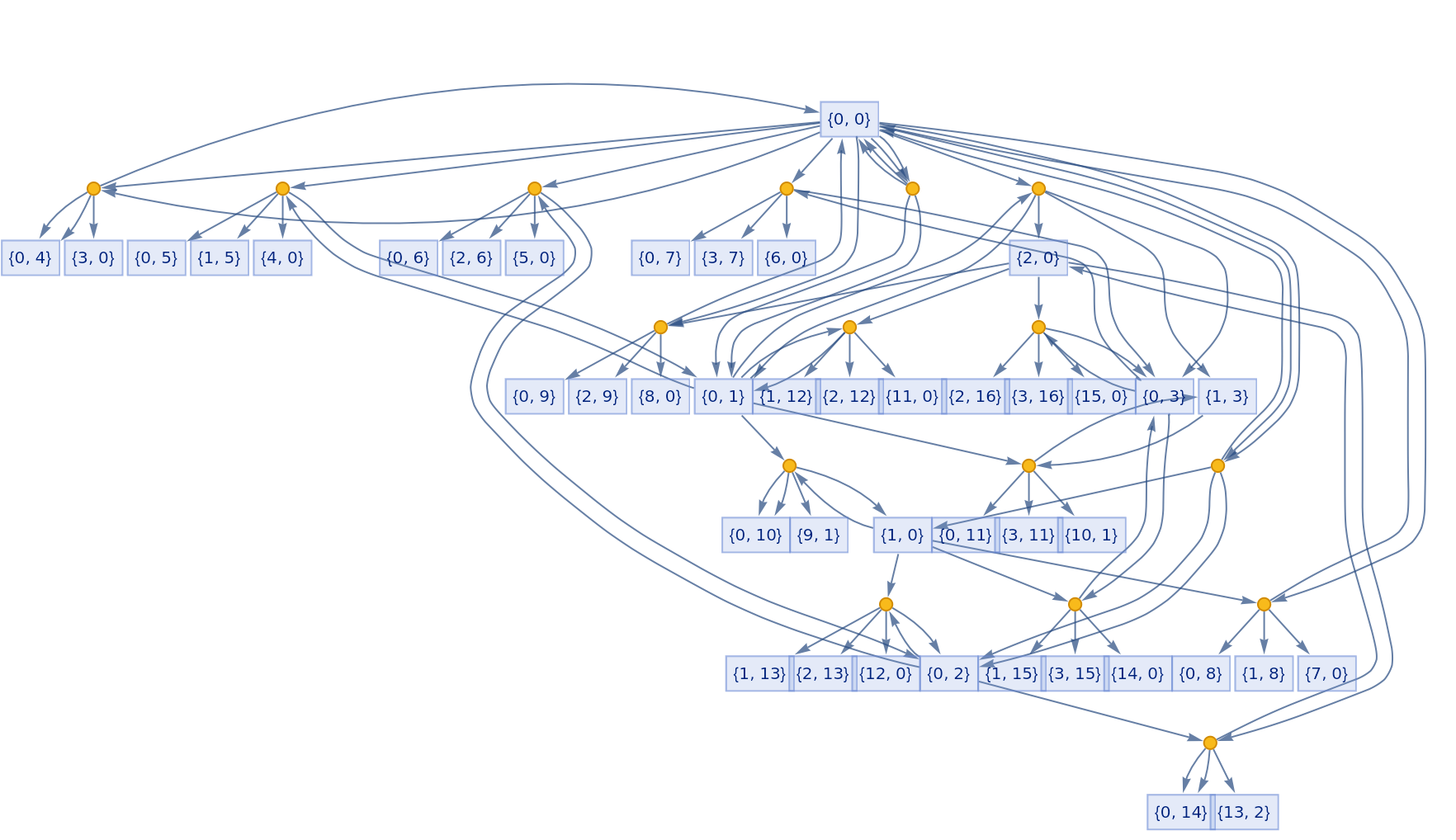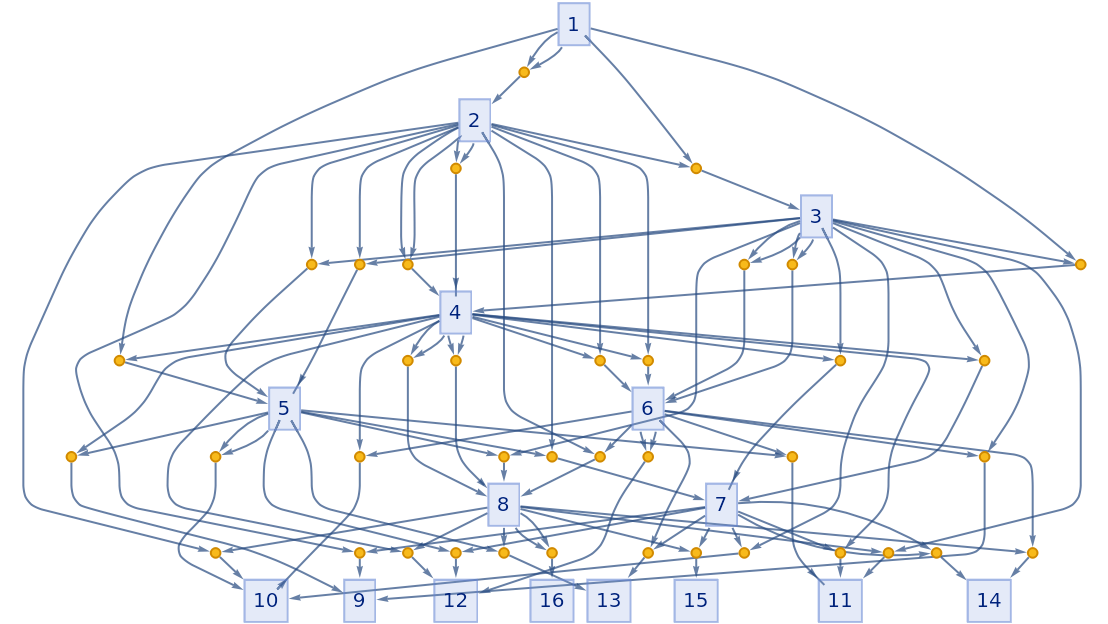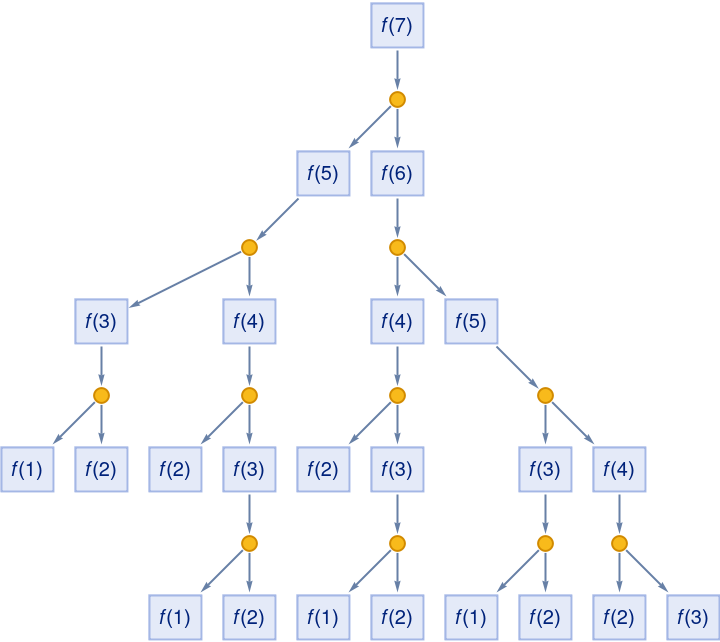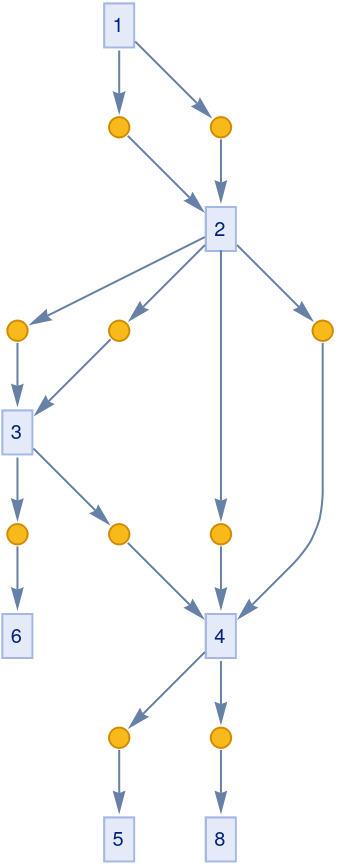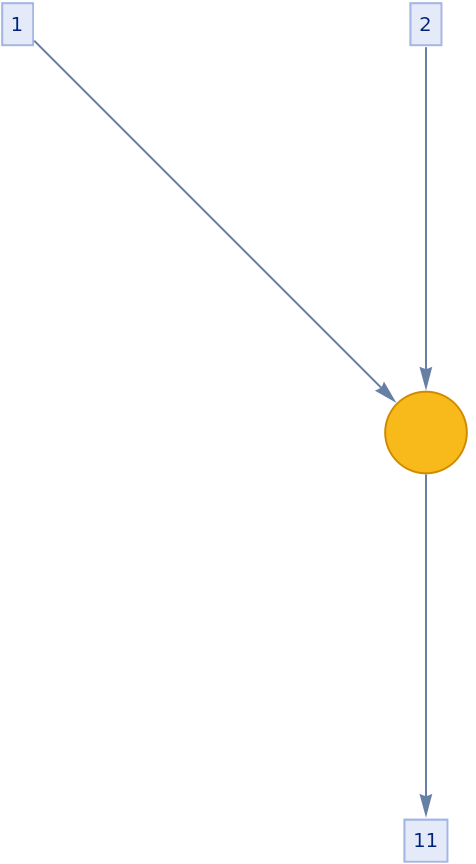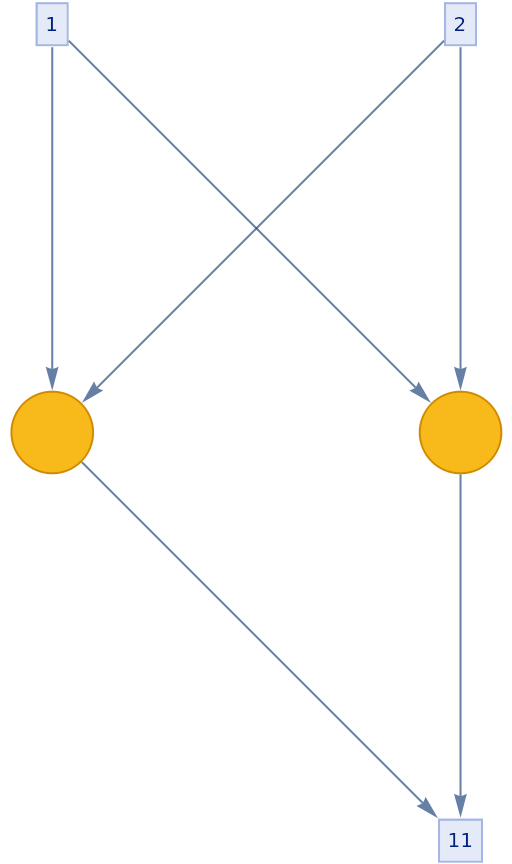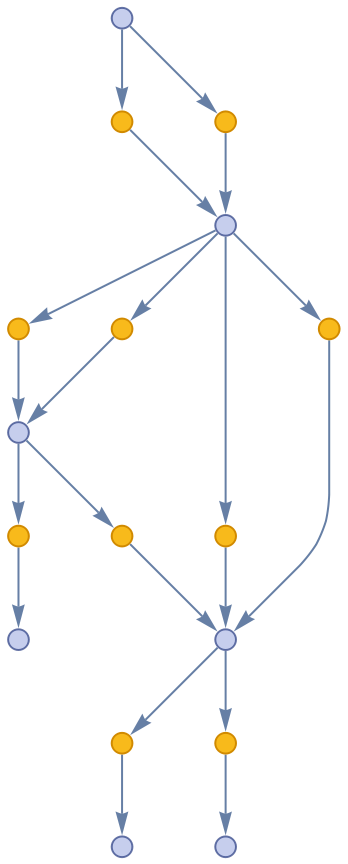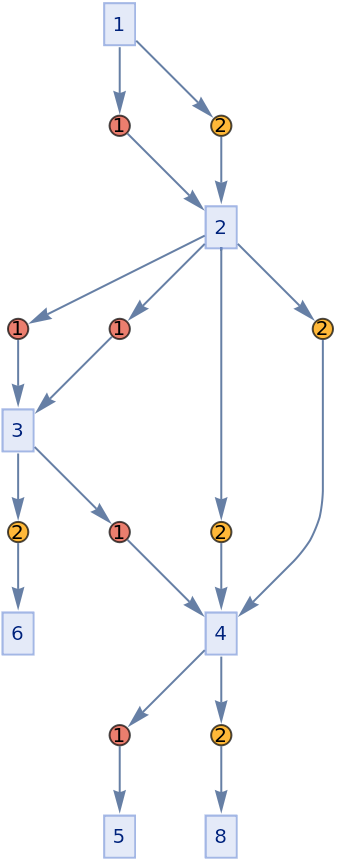Generate a token-event graph for multicomputational evolution according to particular rules
Contributed by:
Stephen Wolfram and Nikolay Murzin
Examples
Basic Examples (2)
Make a token-event graph of a simple rule:
Multiple rules:
Scope (1)
Make a WolframModel-like TokenEventGraph:
Options (8)
AllSubsets (1)
Allow or disallow all subsets of tokens for an event:
TokenDeduplication (1)
Keep or remove duplicate tokens:
EventDeduplication (1)
Keep or remove duplicate events:
TokenMultiplicity (2)
No token multiplicity:
Allow token multiplicity:
TokenLabeling (1)
Disable custom token labeling:
EventLabeling (1)
Label events by its rule index:
TokenRenderingFunction (1)
Specify rendering for the token:
Version History
-
3.1.0
– 23 October 2024
-
3.0.0
– 22 April 2024
-
2.2.0
– 14 March 2022
-
2.1.0
– 07 March 2022
-
2.0.0
– 23 February 2022
-
1.2.0
– 15 February 2022
-
1.1.2
– 19 January 2022
Related Resources

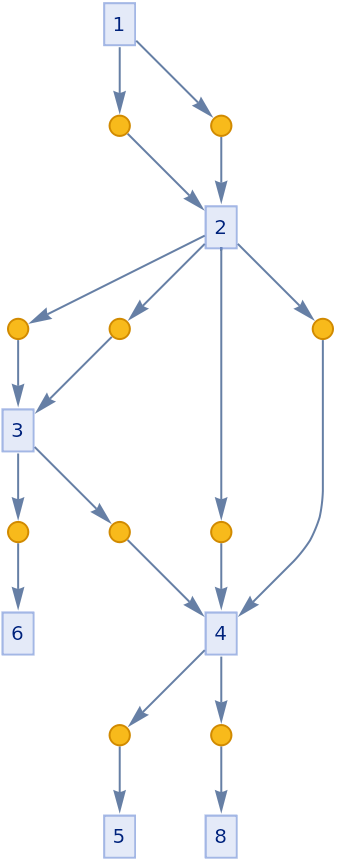
![Module[{w = 0}, ResourceFunction[
"TokenEventGraph"][{{{x_, y_}, {y_, z_}} :> {{w++, y}, {y, z}, {z, w}, {x, w}}}, {{0, 0}}, 3, AspectRatio -> 1/2]]](https://www.wolframcloud.com/obj/resourcesystem/images/55d/55d93118-ad15-4514-be21-45bd34fdde29/1-1-2/1e343c83cf6da9ef.png)
